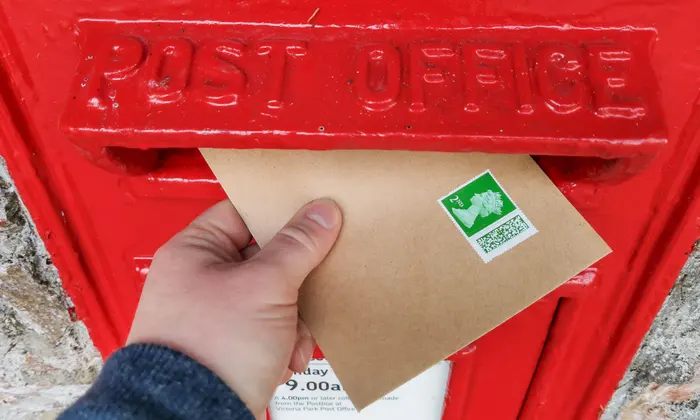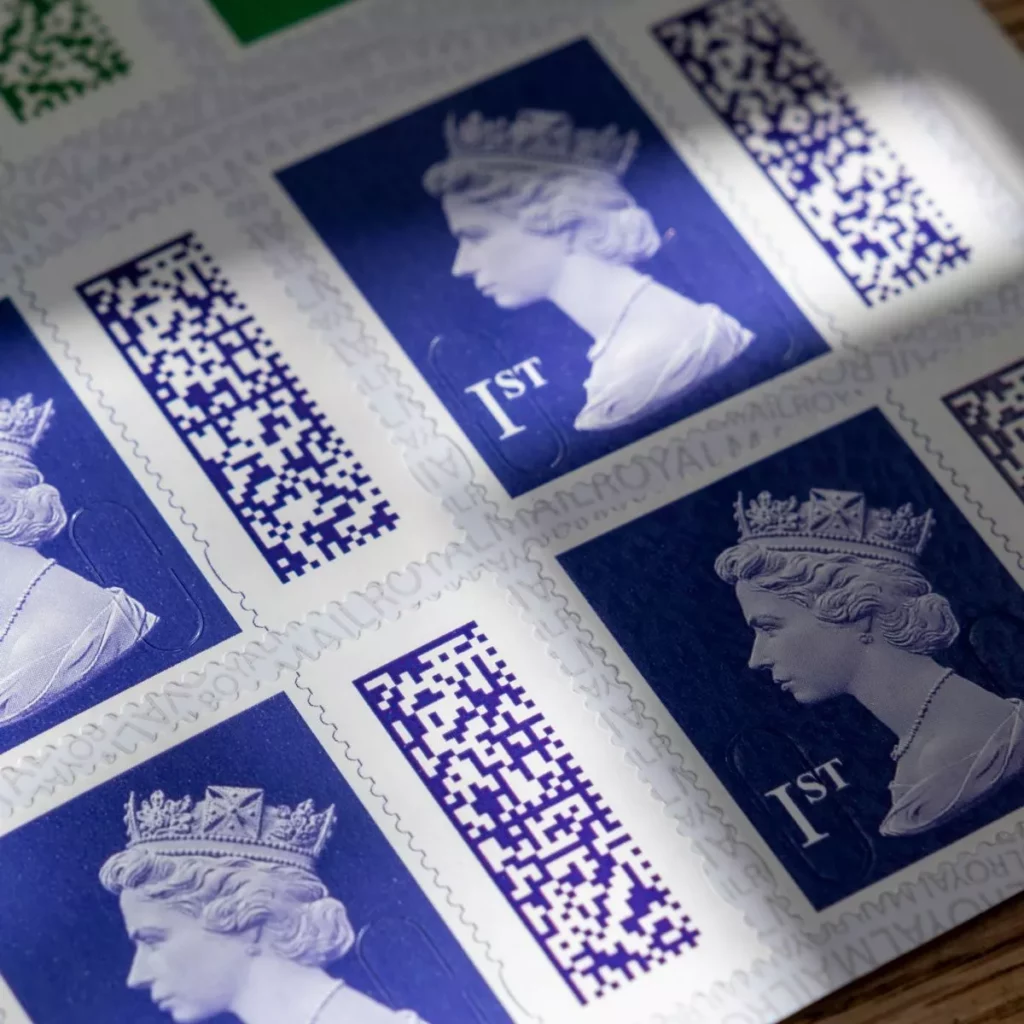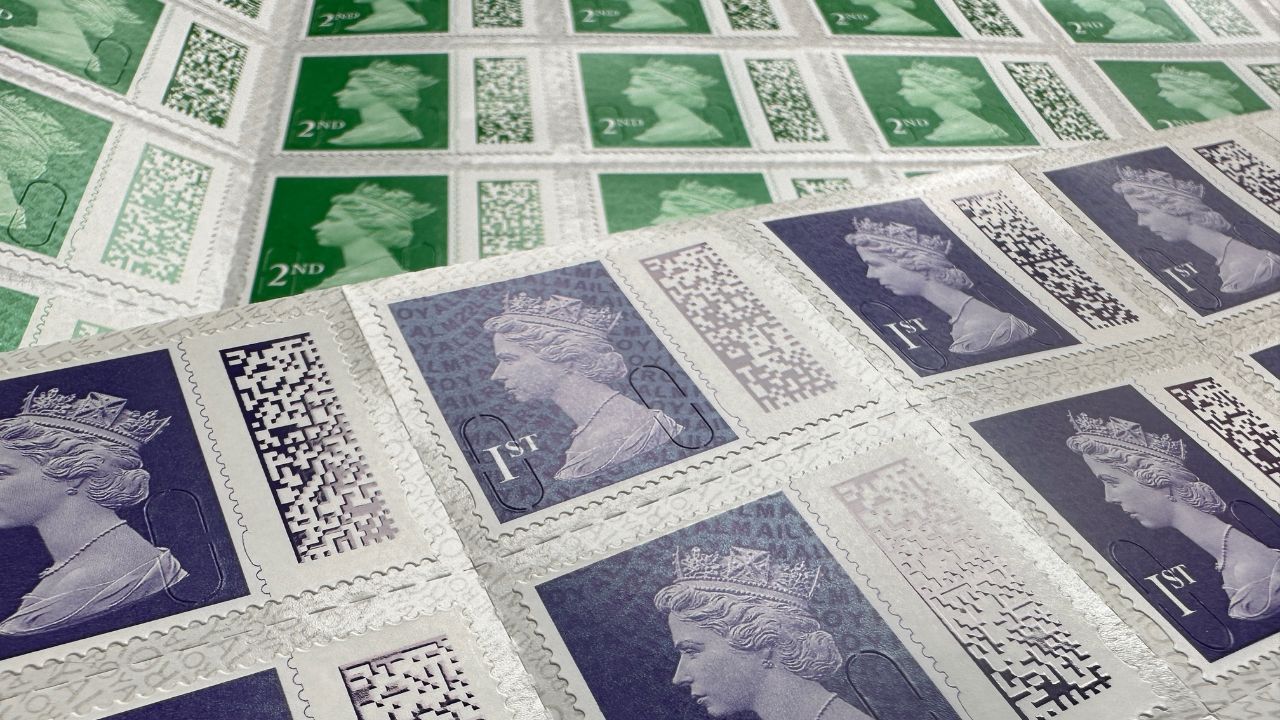No, you cannot legally reuse stamps that haven’t been marked. Postage stamps serve as proof that you’ve paid the required postage for your mail to be delivered. When a stamp hasn’t been marked (canceled) with a postmark by the postal authorities, it means it hasn’t fulfilled its purpose.
Attempting to reuse such stamps is considered a violation of postal regulations in many countries. Postal services have strict policies in place to prevent stamp reuse, as it can result in a loss of revenue and disrupt the proper functioning of the postal system.
Engaging in stamp reuse can have consequences, including fines, legal action, and, in severe cases, imprisonment. To avoid any legal or ethical issues, it’s essential to use postage stamps as intended, ensuring they are marked appropriately by postal authorities before mailing your letters and packages.
What Are Unmarked Stamps?

Unmarked stamps, also referred to as uncanceled stamps or unused stamps, are postage stamps that have not been stamped or canceled by postal authorities.
Postmarks, or cancellations, are ink imprints or markings applied by the postal service to a stamp after it has been used on a piece of mail. The purpose of postmarks is to indicate that the stamp has served its intended function, which is to pay for the postage of the mailed item.
Unmarked stamps typically look brand new and pristine, without any ink markings or cancellation lines. They may be found on envelopes that were never mailed, leftover from previous postage purchases, or acquired through various means.
How Do Postage Stamps Work?
Postage stamps play a crucial role in the postal system by facilitating the payment of postage for sending letters and packages. Here’s how postage stamps work
Value Indication
Each postage stamp carries a designated monetary value, which represents the cost of mailing a standard-sized letter or package up to a specified weight. The value is usually printed prominently on the stamp.
Prepayment
When you purchase postage stamps from a postal service or an authorized vendor, you are essentially prepaying for the delivery of your mail. The cost of the stamps you buy covers the transportation, processing, and delivery of your item.
Affixing Stamps
To use a postage stamp, you need to affix it to the upper right-hand corner of your mail item (such as an envelope or parcel). Ensure that the stamp is securely attached, as it serves as proof of payment.
Cancellation
When you deposit your stamped mail in a mailbox or hand it over to a postal clerk, it goes through the postal system for processing. During this process, the stamp is canceled or postmarked. Postmarks are ink imprints or markings applied by the postal authorities to the stamp to indicate that it has been used.
Validation
The postmark serves as validation that the postage stamp has fulfilled its purpose by paying for the delivery of the mail item. It prevents the stamp from being reused for future mailings.
Transportation and Delivery
Once postmarked, your mail item is processed through sorting facilities, transported to its destination, and ultimately delivered to the recipient’s address.
Accountability
Postage stamps also play a role in the accountability of postal services. They help track the volume of mail being sent and ensure that the appropriate revenue is collected to cover the costs of operating the postal system.
Variety of Stamps
Postal services often issue a variety of stamp designs, featuring artwork, historical figures, events, and themes. Collecting stamps, known as philately, is a popular hobby worldwide.
Additional Services
In addition to standard postage stamps, postal services offer specialized stamps for services like express mail, international shipping, and registered mail. These stamps often have different values and purposes.
Why Are Postage Stamps Important?
Postage stamps hold significant importance within the postal system and have several key roles
Payment for Postal Services
Postage stamps are the currency of the postal system. They serve as a medium through which postal users pay for the services provided by postal authorities.
When you purchase and affix a postage stamp to your mail item, you are essentially prepaying for the entire journey of your mail, from the moment it enters the postal system until it reaches its destination.
However, this prepayment system simplifies the process of sending mail and ensures that postage costs are covered upfront.
Accountability
Postage stamps play a critical role in maintaining accountability within the postal system. Postal services need to accurately track the volume of mail being sent, as well as the revenue generated from postage. Stamps provide a clear record of these transactions. This accountability is crucial for managing postal operations efficiently and ensuring that the system remains financially sustainable.
Validation of Mail
Postage stamps validate your mail. They indicate that you have complied with the postal regulations and have paid the necessary postage for your item to be processed and delivered.
Without a valid stamp, your mail may be considered undeliverable or subject to additional postage fees. Stamps serve as a visible confirmation that your mail is ready for dispatch.
Prevention of Unauthorized Use
The design of postage stamps incorporates various security features to prevent unauthorized or fraudulent use. Once a stamp is affixed to a mail item, it is canceled with a postmark.
This postmark, which is applied by postal authorities, typically includes the date and location of processing. Canceling stamps in this way makes it challenging to reuse them for future mailings, as it clearly indicates that the stamp has been used once.
Cultural and Historical Significance
Postage stamps are miniature works of art that often showcase a nation’s culture, history, and achievements. They provide a visual representation of a country’s heritage and are often chosen to commemorate significant events, famous individuals, or cultural milestones.
Stamp collectors, or philatelists, are passionate about preserving and appreciating these pieces of history, contributing to their cultural importance.
Promotion of Postal Services
Unique and attractive stamp designs can promote postal services and inspire people to send mail. Special stamps, such as commemorative issues for national holidays or anniversaries, generate interest and encourage the use of postal services. These stamps often feature captivating designs and themes that capture the public’s attention.
Revenue Generation
The sale of postage stamps generates revenue for postal services. This income is essential for funding various aspects of postal infrastructure and operations, including maintaining postal facilities, employing postal workers, and ensuring the efficient delivery of mail. It allows postal services to offer affordable rates to customers and expand their reach, even to remote areas.
Global Communication
Postage stamps facilitate global communication by enabling the seamless exchange of letters and packages across borders. They are a fundamental component of international mail, allowing people, businesses, and nations to connect and communicate with one another. Stamps play a role in fostering diplomacy, trade, and cultural exchanges on a global scale.
How can I be sure that I’m buying genuine stamps?
Ensuring that you are buying genuine postage stamps is essential to avoid issues with mail delivery and to avoid inadvertently engaging in illegal activities, such as stamp forgery or fraud. Here are some tips to help you verify the authenticity of postage stamps
Purchase from Official Sources
The most reliable way to obtain genuine postage stamps is to buy them directly from official postal authorities or their authorized vendors. These can include post offices, postal websites, and recognized retailers that have agreements with the postal service.
Check for Security Features
Most modern postage stamps incorporate security features to deter counterfeiting. These may include watermarks, microprinting, fluorescent inks, or holograms. Familiarize yourself with the security features used on the stamps issued by your country’s postal service.
Verify Stamp Designs and Details
Genuine postage stamps should match the official designs and details provided by the postal service. Compare the stamp you are considering purchasing with images and information available on the postal authority’s website or official publications.
Beware of Unusual Deals
Exercise caution when encountering unusually low prices or deals that seem too good to be true. If a deal seems too good to be true, it might be an indicator of counterfeit or stolen stamps.
Consult Stamp Experts
If you are unsure about the authenticity of a stamp, seek the advice of experienced stamp collectors or experts. They can provide insights and expertise to help you determine whether a stamp is genuine.
Use Reputable Dealers
When purchasing stamps from private sellers or dealers, choose reputable and well-established sources with a history of dealing in genuine stamps. Read reviews, ask for references, and verify their reputation within the philatelic community.
Request Certificates of Authenticity
For valuable or rare stamps, consider requesting certificates of authenticity from recognized stamp certification agencies. These certificates provide assurance of a stamp’s legitimacy and can be valuable for collectors.
Beware of Online Marketplaces
Be cautious when buying stamps from online marketplaces or auction websites. While many legitimate sellers operate on these platforms, they can also attract counterfeit or questionable listings. Check seller ratings and reviews, and ensure the seller has a clear return policy.
Educate Yourself
Investing time in learning about stamps, their designs, and security features specific to your country’s postage stamps can be invaluable in identifying genuine stamps.
Stay Informed
Keep up-to-date with news and alerts about stamp forgery or counterfeit issues in your region. Postal authorities often issue warnings about counterfeit stamps and provide guidance on how to identify them.
How to Detect Unused Stamps
Detecting unused stamps, or stamps that have not been canceled or marked by postal authorities, is relatively straightforward. Here are some steps to help you identify unused stamps
Visual Inspection: The most obvious sign of an unused stamp is its appearance. Unused stamps should look pristine, without any ink markings or cancellation lines. They will typically have the full, original design intact.
Absence of Postmark: The absence of a postmark (also known as a cancellation mark) is a clear indicator that a stamp has not been used. Postmarks are ink imprints applied by postal authorities to indicate that a stamp has fulfilled its purpose and paid for the postage.
Check for Unused Stamps in Collections: If you are examining a stamp collection, you can often find unused stamps in stamp albums or collections. These stamps are often organized and labeled as unused, mint, or uncancelled.
Examine the Gum on the Back: On the back of a postage stamp, there is a layer of adhesive known as gum. Unused stamps should have a clean, intact gum surface. If the gum is damaged, missing, or shows signs of wear, the stamp may have been used.
Inspect for Signs of Wear and Tear: Unused stamps should not exhibit signs of wear, creases, or damage. They should have sharp corners and edges. Any significant wear or damage may suggest previous use.
Verify with Known Design Variations: Familiarize yourself with the specific design variations of the stamp you are examining. Some stamps have unique features or printing errors that can help determine their authenticity.
Compare with Reference Material: If you are unsure about the authenticity of a stamp, compare it with reference material, such as stamp catalogs or online resources, to ensure that the design and details match those of genuine, unused stamps.
Use a Magnifying Glass: A magnifying glass can be helpful in examining the finer details of a stamp, especially if you are looking for subtle differences that might indicate previous use.
Consult Stamp Experts: If you have doubts about the status of a stamp, seek the advice of experienced stamp collectors or experts. They can provide valuable insights into the authenticity and condition of a stamp.
Check the Stamp’s Provenance: When purchasing stamps from private sellers or dealers, inquire about the stamp’s provenance or history. If it has a documented history of being unused and well-preserved, it is more likely to be genuine.
Remember that detecting unused stamps is generally easier than identifying used ones, as the absence of a postmark is a clear indicator. However, when in doubt, consult experts or reference materials to ensure the stamp’s authenticity and value, especially if you are dealing with rare or collectible stamps.
Will You Get Arrested for Reusing Postage Stamps?

In the United Kingdom, reusing postage stamps is generally discouraged and can lead to consequences, but arrest is not a common outcome for this offense. Here’s what you should know about the potential consequences of reusing postage stamps in the UK
Postal Regulations
Reusing postage stamps in the UK is considered a violation of postal regulations.
Additionally, the Royal Mail considers the reuse of postage stamps a significant matter and has implemented various measures to identify such cases. If you are found reusing stamps, you could potentially be subject to a fine of as much as £1,000 or even face a jail term of up to six months. It’s important to use postage stamps correctly to avoid legal consequences.
Consequences
The consequences for reusing postage stamps in the UK can vary depending on the specific circumstances and the scale of the violation. Potential consequences may include fines, warnings, or other administrative actions taken by postal authorities.
Civil Liability
In addition to any fines or warnings, individuals or businesses may be required to pay the cost of postage for the mail in question. This serves to cover the revenue that the postal service would have received if proper postage had been applied.
Legal Action
While arrest is unlikely for the act of reusing postage stamps, repeat offenders or those engaged in significant postal fraud schemes may face legal action. Authorities may investigate and gather evidence to pursue criminal charges in more serious cases.
Education and Warnings
In many instances, postal authorities may take an educational approach, especially if they believe that the misuse of postage stamps was unintentional or due to a lack of awareness regarding postal regulations. They may issue warnings or provide information on proper postage procedures.
Reporting Suspected Fraud
The Royal Mail encourages individuals and businesses to report any suspected cases of postage stamp fraud or misuse. Reporting such cases can help postal authorities address violations.
FAQ
Can you reuse an uncancelled stamp?
Yes, you can technically attempt to reuse an uncancelled stamp, but it is not allowed and may result in penalties as it violates postal regulations.
Can you tape an unused stamp to an envelope?
Yes, you can affix an unused stamp to an envelope using tape as long as it securely sticks to the envelope, doesn’t obscure any details, and covers the appropriate postage.
Is it OK to reuse stamps?
No, it is not okay to reuse stamps without proper cancellation, as it is generally against postal regulations and can lead to legal consequences.
What happens to unused stamps?
Unused stamps that are not postmarked or canceled can be returned to the sender, delayed, or confiscated by postal authorities to prevent misuse.
Do any stamps expire?
Most postage stamps issued by postal services do not have an expiration date, but it’s essential to check with your local postal service for specific policies.
What are unused stamps called?
Unused stamps are often referred to as mint stamps or uncanceled stamps, indicating that they have not been postmarked or used for postage.
Do stamps ever expire?
While most stamps do not expire, policies regarding their use may vary by postal service, so it’s advisable to check with your local postal authority.
What if I have old stamps without price?
Old stamps without a denomination can often still be used for postage by combining them to meet the current postage rate or exchanging them for newer stamps at the post office.
Can you buy a single stamp?
Yes, many postal services offer the option to purchase single stamps for mailing smaller items, postcards, or when you only need one stamp.
How long do ink stamps last?
Ink stamps used for marking or dating documents can last for a significant period depending on factors like ink quality and usage. They may need occasional re-inking or replacement if they become dry or worn out.
Final words
It’s essential to understand that reusing stamps that haven’t been marked or canceled is generally not allowed. Stamps serve as a way to pay for postage, and when they haven’t been postmarked, it means they haven’t fulfilled their purpose. Attempting to reuse these stamps can lead to legal troubles, fines, or even jail time in some cases.
To avoid any issues, it’s best to use stamps as they are intended, ensuring they are properly canceled by postal authorities before sending your mail. By following the rules, you not only stay on the right side of the law but also support the smooth operation of the postal system. So, when in doubt, it’s wise to play it safe and use stamps the way they are meant to be used.



